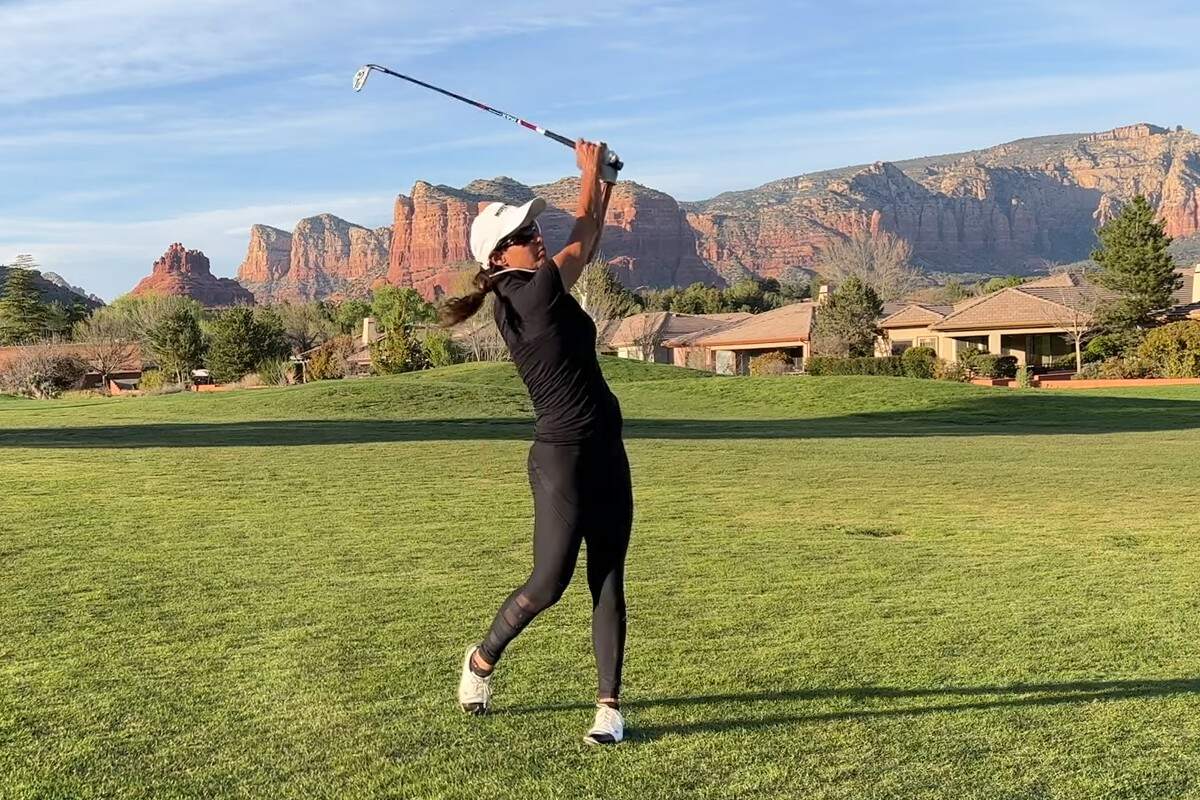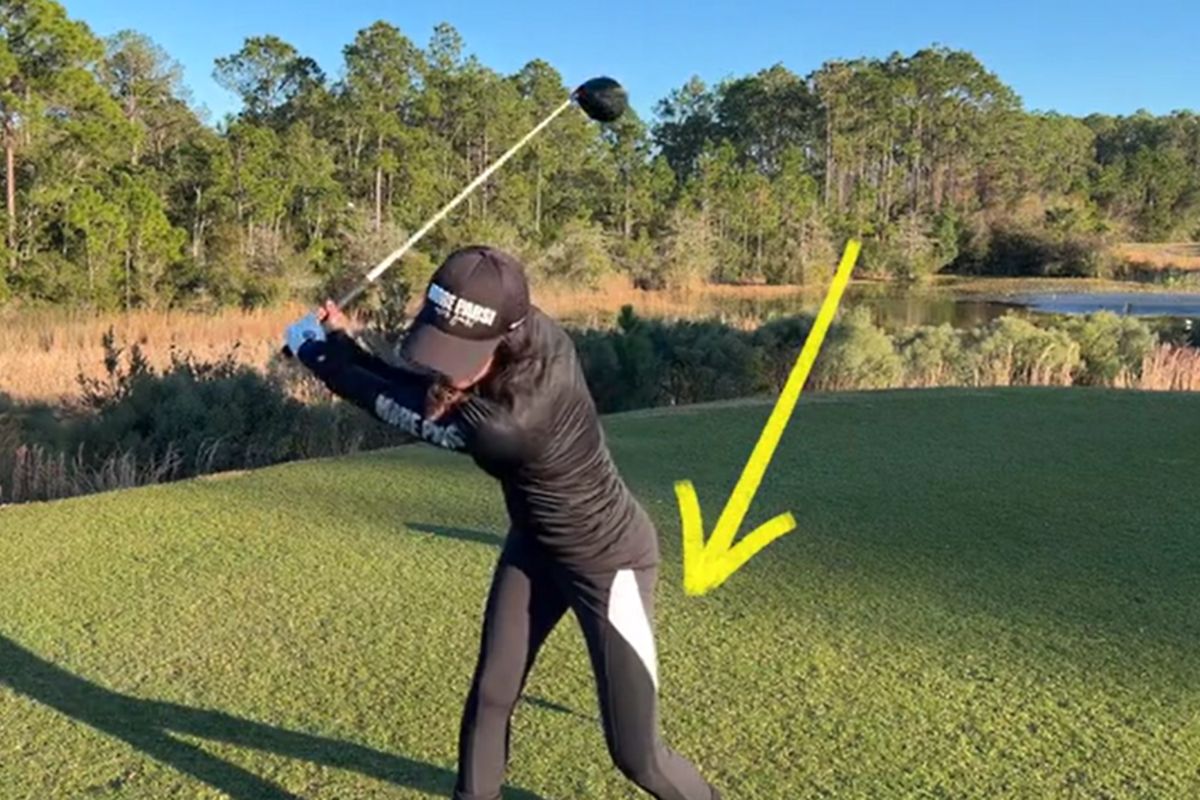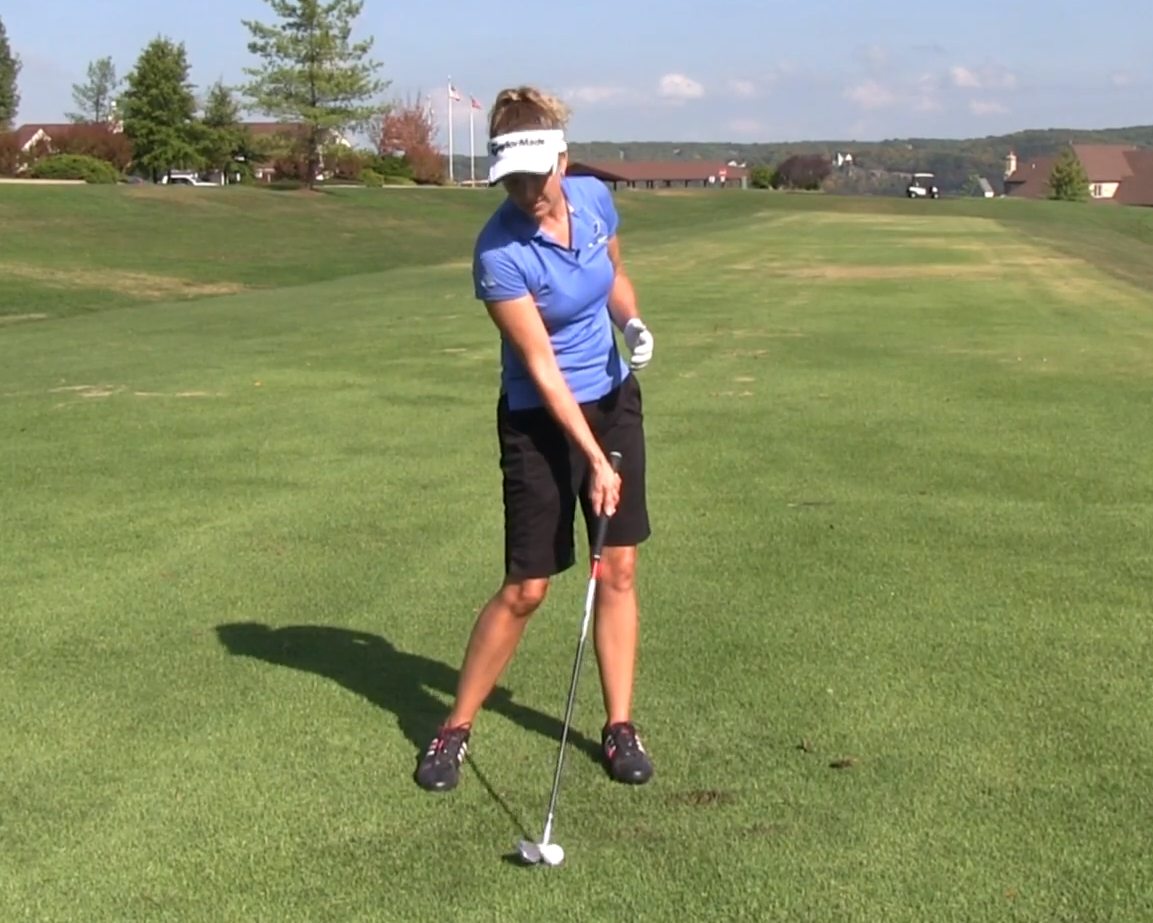The way to really save shots is by improving and practicing your short game. Every time you get ‘up and down’ (chipping or pitching it close enough to the hole that you can make your first putt), you are on your way to better scoring. Sound good? Let’s go!
The sooner you can get the ball on the ground, rolling towards the flag, the better.
When you are off the green, think about chipping which I will describe as a putt with a flying start! Imaging this lofted putt is like a 747 coming in for a landing…touch down and then taxi to the end of the runway where the flag is located. Minimum airtime, maximum ground time!
Now that hybrids are in most of our bags, consider using a hybrid for chipping. Set up like a putt with hybrid sitting upright at address. Move your hands down the handle end to shorten this club like a putter. With a steady head and little or no body action and little or no wrist hinge, simply putt the ball with your hybrid, brushing the grass so that the ball will lift/loft, skipping off the fringe and roll towards the hole. Low risk and high reward, the Hybrid Chip will save you strokes around the green!
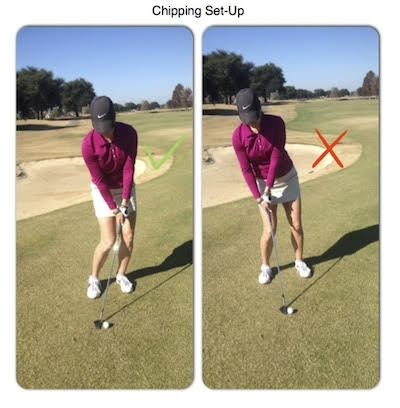
Keep Your Hands Ahead of the Clubface at Impact When Chipping
The task of chipping may not seem like a highly athletic or difficult activity, but even chipping – like all other golf shots – requires hand/eye coordination and body control.
A chip shot involves precision to control the correct yardage and distance to leave the shortest possible putt. Because this shot involves a relatively short swing, there is little time for compensations.
Where a lot of high-handicappers go wrong on chip shots is in trying to hit the ball using only their hands – a kind of scooping action. This scooping action not only causes sculled shots but fat shots and chunked shots as well.
In an attempt to get the ball airborne, some golfers may try to lift the ball up or scoop at the moment of impact. Many times, this causes the club to decelerate, so the clubhead bottoms out before contacting the ball, and the clubhead passes the hands on the follow-through. Ideally, you want the hands to stay ahead of the clubface at impact and as you follow-through.
1. Keep the ball low! Amateurs are far too quick to pull a lob wedge or sand wedge from their bag. Consider an 8 or 6 iron. This allows you to make a small swing which will result in more solid contact. Only play a high shot when you have no other option. My rule – If there is room to bump a 6 iron to the hole, then that’s the shot to play.
2. Read the green! Most golfers will pay attention to the slope of the green when putting, but this is often overlooked for shots around the green. Paying more attention to the slopes will leave you more 3 footers instead of those testy 7 footers.
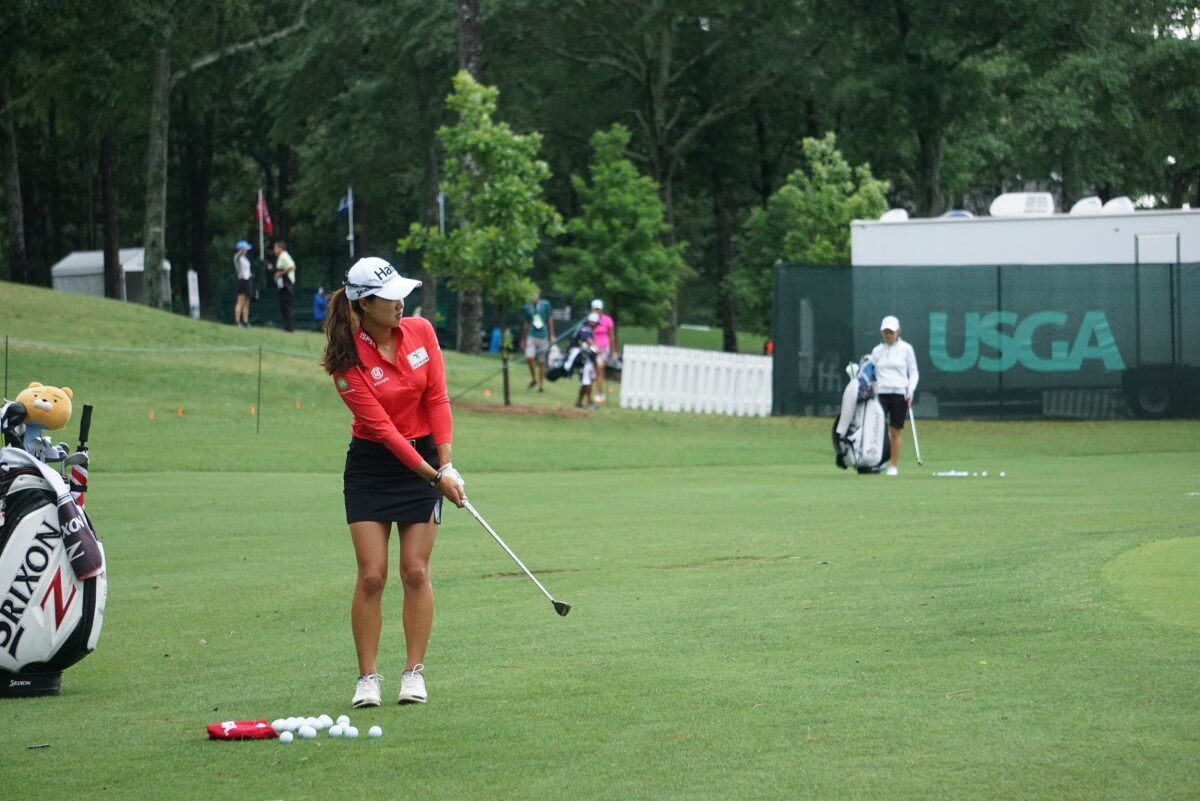
As a busy instructor as a head professional and coaching boys and girls high school golf teams, I think all players would benefit by landing the ball closer to them and letting it roll more than it flew. So many times, I have seen a player three-putt after chipping or pitching a shot too high with a sand wedge which left them a long putt. Save shots by putting the ball a little bit behind the middle of your stance and landing the ball less than halfway in the air with a lower ball flight whenever there is run room.
The best way to save shots around the green is to come up with a process for club selection and the right technique. Instead of sticking to one club and defaulting to one technique try a new process to enhance your game. First, assess the lie of the ball on the grass. This will tell you what kind of loft you will need. Next, calculate how much carry versus roll you can work with. This will help you narrow down your club selection. Finally, select the best technique (chip or pitch-yes there is a difference!). If you match up the appropriate club and the appropriate technique, you can begin saving shots around the green instantly!
To save shots around the green be creative. Imagine and then create a shot that suits the situation. Study short game techniques, successful players, and practice your short game from a variety of situations regularly. One standard technique won’t work every time.
Look at your clubs as tools, learn to create a variety of shots using fundamentally sound chipping and pitching techniques, and then change the ball position, shaft angle, and face positions. Always make practice fun. No matter which shot you pick you still have to be able to putt. Practice your putting using good fundamentals.
Jane Schafer
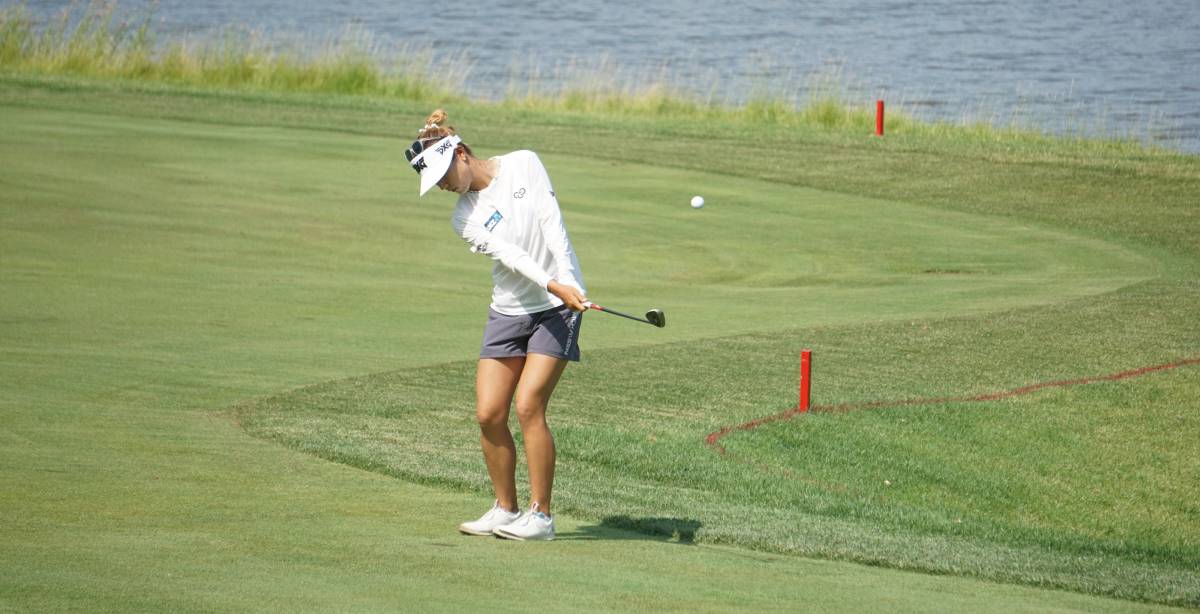
The short game is all about making your next shot as easy as possible. If you can’t reach the Green in Regulation, find the best “Bail Out” area to make your approach. When thinking about your shot to the flag, you want to leave the easiest putt possible.
It’s not enough to just hit to a generic “3-4ft circle” if that leaves a tough breaking putt. You want to hit your approach into your favored quadrant:
Uphill / Downhill
Left to Right / Right to Left
Whichever putt you are most comfortable making is the quadrant you want to get your approach to finish”
Simon Dewsbury
I always step up to a chip believing I will get it close enough to make the putt. No matter the outcome. Soft hands, weight on the leading side. Pick a spot you want to land the ball knowing how far it will run out. Then with a very quiet lower body make the shot. Confidence is critical.
Practice a few chips balancing weight on leading foot only, put other foot behind you balancing on the toes, I.e minimal weight on it. Then with a gentle grip hit some shots. Allow the club to brush the ground with and ahead of the ball.
Lizzy Freemantle
At address SAVE 70% of your missed chips by adjusting only 1 thing.
Raise the shaft up to almost vertical. The toe only not the whole sole will rest on the grass.
Now with the shaft vertical & the toe only soled. All your shots clean or slight miss will find the target.
Set up to chip in with this simple address shaft change.
Cathy Schmidt
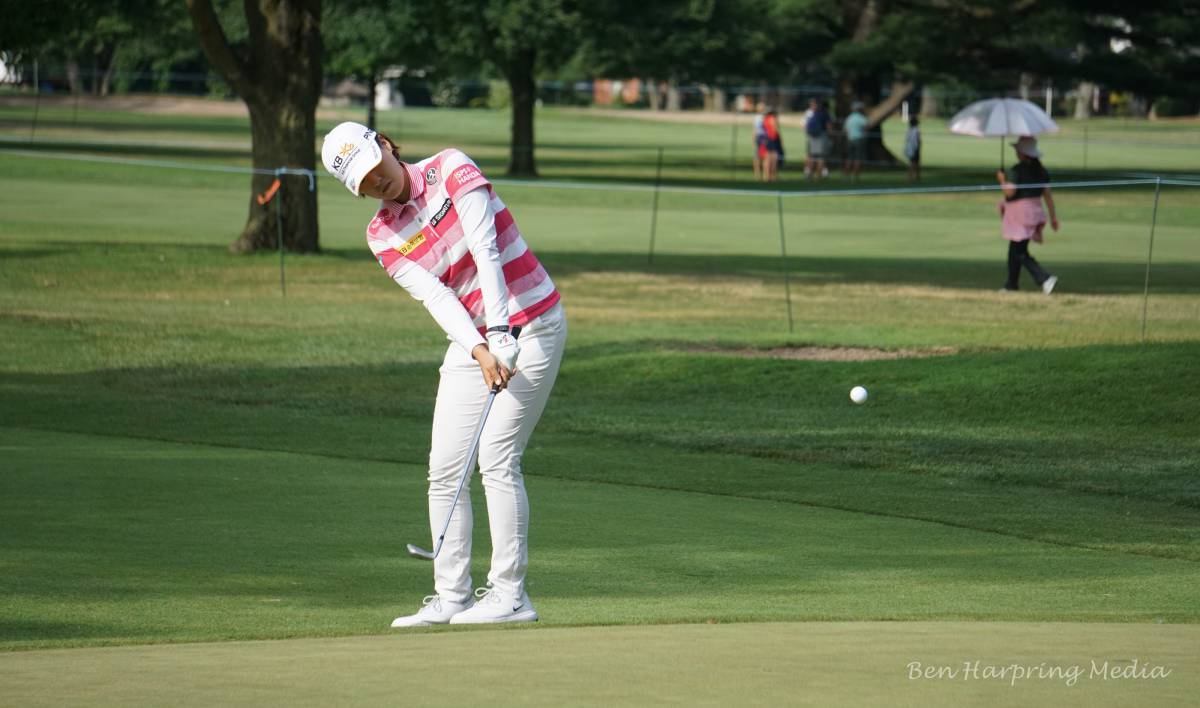
Develop a “go-to” shot you can always count on. Once you decide what that shot is for you, practice it to be sure you hit it clean in all types of lies. Then be sure to practice feel for distance control.
Distance Control
Change where you grip the club. Down / Middle / End
Change the size of your swing. Below Knees / At Knees / Above Knees
It’s important to know how far you hit each club in the bag with full shots, the same applies to your short game. How far do your chip shots carry with your Sand Wedge on average? How about your Gap Wedge? Loft Wedge? Knowing how far the ball will carry and roll out on the courses you frequently play at will give you an advantage next time you miss a green. Eliminate as much guesswork as possible. Try it out with pitches around the green as well. Results will vary but it’ll help you feel more confident over the ball.
A great way to get more up & downs is to focus on your process. The first step is to assess your lie. Is the ball sitting pretty or sitting down in the grass? This will help to determine club selection, as will the pin placement. How much green do you have between the ball and pin? Are the greens rolling fast or slow? Once you assess the lie and the green, select a club. The final step is to select a landing spot…and it’s not the flag. Focus (really focus) on landing your ball on that exact spot to make more pars!
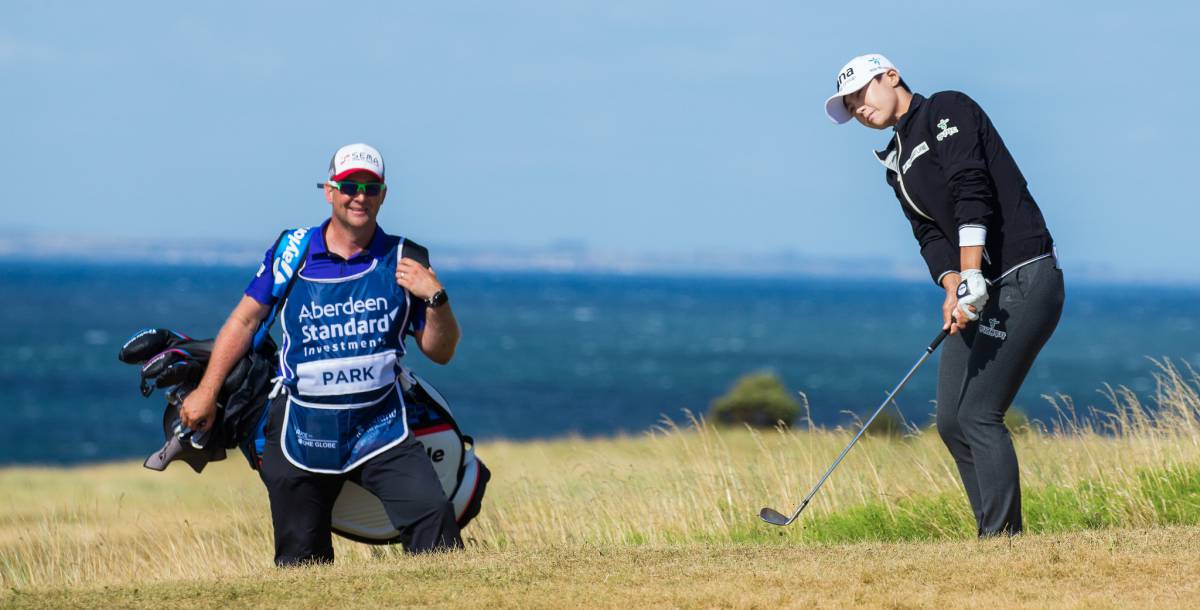
Here’s a simple question to help you get up and down and save shots around the greens. Are you going to “LOFT “ it or keep it “LOW”
“KEEP IT LOW” If there’s nothing between you and the flagstick, or the lie is extra-tight keep the shot low…… low shots that “run” to the hole will give you more consistency allowing the ball to react more like a putt. How are you going to do this? Keep a close stance….feet together and position the ball just right of center and think tall!!! Perfect posture is a key piece to your success feeling like your hands sit high and you are closer to the ball than normal. Now just swing the handle……with your hands high, it is hard to hinge, allowing the stroke to feel like your putting stroke. Try this with a few different clubs…..wedge, 7-iron, and even the hybrid and watch your shots get closer by the minute!
“LOFT IT” If there’s an obstacle in your path or the ball sits in deep rough you will want to “Loft it “ and carry it all the way to the hole…here’s how to pitch it high and let your shots be soft when they land on the green. Keep your stance balanced with your feet under your hips and position the ball more forward (remember left equals loft in most short shots!) then add a little more pressure over your front foot. Your perfect posture for this shot will require a little more tilt over the ball which will position your body a little farther away from the ball with lower hands. With your hands a bit lower it will promote hinge creating a downward strike to the ball and a little extra loft at impact. Try it….it’s like magic!
Golfers use too much wrist action in shots close to the green. They add unnecessary risk and try to hit shots that they haven’t practiced or that are beyond their skill set. Hitting it high is not always required. The miss here is too penalizing (a skull over the green or a chunk into the bunker). Play smart. Minimize wrist movement in your short swings, aim to the fat part of the green when necessary and you’ll save shots.
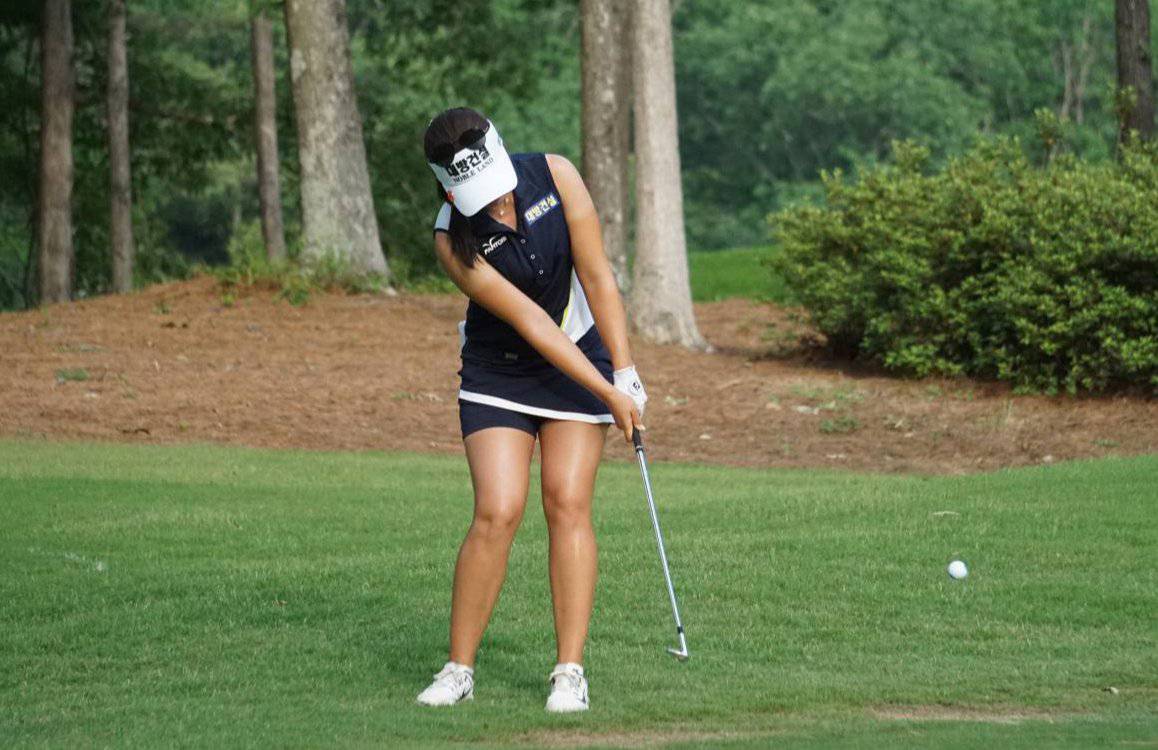
The best way to save shots around the green is to always choose the option with the least risk. The smaller the swing or stroke, the less your chance for error.
Follow the following order:
1. Putt whenever you can, even from well off the green.
2. Chip/bump and run when you cannot putt.
3. Pitch only when you have to.
By selecting the short game shot with the lowest risk, even if your contact is less than perfect, your ball will be more likely to still be in play and closer to the pin.
It is easier to control distance if you get the ball rolling quickly. Try it, put a ball in your hand and roll it towards the hole, and then throw the ball up in the air and try to stop in near the hole. You will find it is easier to roll the ball and get it to stop near the hole.
If you are just off the green and don’t have much rough between the ball and the green, use a 9, 8, or 7-iron to get the ball rolling as soon as you can.
Brian Moose





